What Is a Technical SEO Audit and Why Does It Matter?
Even the best-written content in the world won’t rank if your website is broken behind
Home » How To Manage Your Backlinks For Faster Rankings
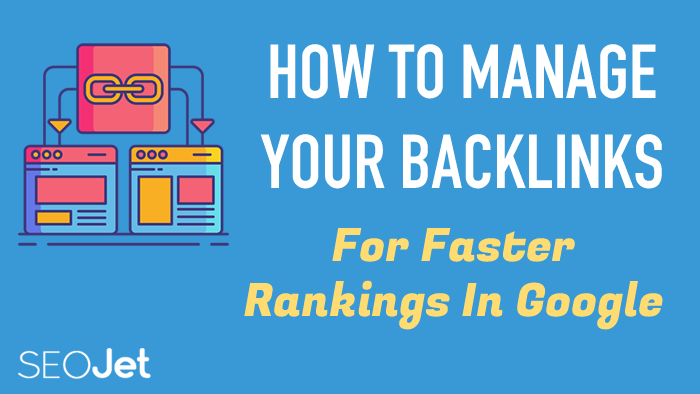
Even the best-written content in the world won’t rank if your website is broken behind
Google redefined the search experience with AI Overviews—a generative AI feature that instantly summarizes answers
One of the hardest things to do in SEO is get backlinks to your website. But let’s pretend for a minute that you have cracked that code and have no trouble getting all of the links you would ever want to every page you want.
Inevitably comes the question, how to manage your backlinks?
How do you know if you have built enough links to your most important pages? How do you make sure your link building isn’t getting stagnant to certain pages and you lose rankings? How do you know if your backlink profile is looking natural?
These were all questions I set out to answer once and for all.
Like most SEO’s I was using a spreadsheet to manage all of the link building for my SEO clients. It wasn’t until I realized that I hadn’t built a link to one of my client’s homepage in three months that I truly realized something needed to change.
Not to mention choosing the anchor text for each link I was working so hard to get was as strategic as pulling names out of a hat. There was no rhyme or reason to it, I was just guessing and hoping that fifteen years of SEO experience wouldn’t let me down.
It was an inexact science at best and at worst, a great way to get a dreaded Google penalty.
So I set out on a quest to figure out once and for all the best way to manage backlinks so that every link I built would help move the needle in the search results.
Here are the basics to the plan:
The whole reason you want to manage backlinks is because you want to make sure the links you build get you higher rankings in Google.
There is nothing worse than spending a bunch of time or money to buy guest posts only to have nothing happen when the links get placed, or worse, your rankings drop.
The way to solve this is to create a backlink plan that mirrors the backlink strategies of those on page one of Google for your main key phrase.
We do this because Google is already telling us what they want to see. Those who they have placed on page one of Google have done their SEO the right way.
By creating a link building plan based on what the top ranked sites are doing, you can know that each link you build is pushing your backlink profile closer to matching a #1 ranked profile.
Here are the four keys to creating a plan that will actually work for you:
1. First, you’ll want to look at who ranks in the top ten for your main key phrase. These guys are where you want to be so we need to figure out how they got there.
2. Second, look at how many homepage backlinks each site has. This gives you an idea of how much brand trust they have. Most people doing SEO don’t realize that this is probably the biggest ranking factor now.
3. Third, you want to look at how many backlinks each ranked page has (Not the homepage but the actual page that ranks in Google).
This will give you an idea of how many backlinks you need to build to a page in order to get good results.
4. Finally you want to get an idea of anchor text ratios for everyone in the top ten. Are they targeting exact match anchors? Is Google favoring pages with links that have no reference to key phrases at all?
You’re going to want to match pretty closely what the other top ten guys are doing.
Once you have this data then you can start to make a real plan as to how many links a page needs, how many links you should be sending to your homepage, and which anchor text to use for each link.
For example, let’s pretend I was making a backlink plan for the page https://seojet.net/blog/seo-competitor-analysis-tool/.
In this example let’s say I choose the key phrase “seo competitor link analysis” as my main key phrase.
So I would go to step one and see everyone that ranks on page one for that phrase.
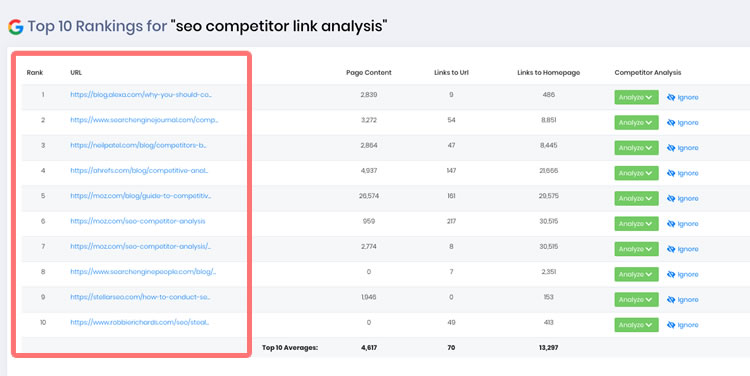
Then I would look at how many homepage links each website in the top ten has.

You can see that on average a website in the top 10 has 13k+ backlinks to the homepage. That might seem like an insurmountable number of backlinks to have to get to.
But if you look at the lowest number of homepage backlinks it is around 400 which means it is possible to get to page one with much less backlinks than the average.
Then we dial it in even further and look at the total number of backlinks that point to each page in the top ten.
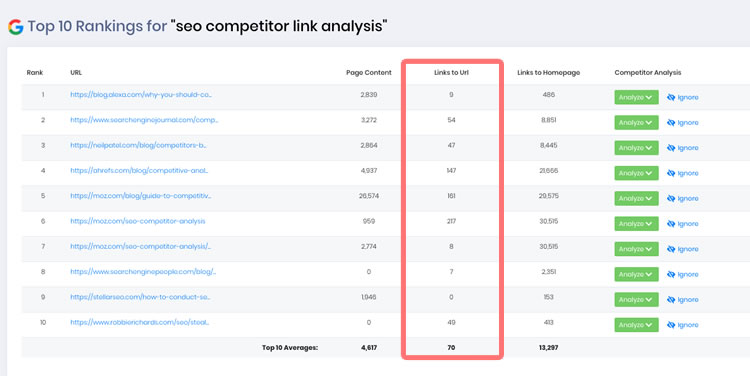
It is important to look at the average number of links per page in the top ten to have a better idea of what it will take to compete.
In this scenario the number is 70 however we do notice that four of the pages in the top ten have less than 10 backlinks.
And finally we look at the anchor text distribution of the top ten to see what the ratios are.
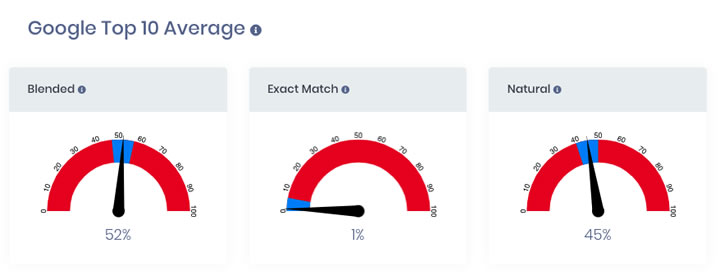
For this page you can see that the pages that rank in the top ten are targeting key phrases pretty heavily in their anchors (Blended Anchors), but they are not doing many exact match anchors.
So using this data you can start to plan out each link that you are going to get for the page.
Once we have all of the data we start building backlinks, choosing anchors that will help us match the anchor text distribution of the pages on the first page of Google.
I feel like I need to put this section into this post at this point. Some people might look at those numbers and feel like there is no point to trying to compete for this key phrase.
At first glance the numbers can seem daunting. But one factor that is really important is to know how hard these pages in the top ten are targeting the key phrase “seo competitor link analysis”.
While it might be my #1 main key phrase that I am targeting on this page, for them it might be a key phrase they don’t even really care about.
Often times they will be targeting something much more competitive like “SEO competitor analysis” and are just ranking for your main phrase as a residual effect.
The reason this is important is because if you focus on a phrase that they are not focused on, your SEO will be more relevant to your phrase and you will be able to rank for the phrase with less backlinks than the competition.
I have found this to be true with many of the main key phrases I target on my power pages.
In this example, none of the top ten sites actually have “seo competitor link analysis” in their title. If this is my main phrase this gives me a real opportunity to make headway for this phrase without having to get as many links as my competition.
When creating a plan to manage your backlinks, you want to treat every individual page as its own entity.
Each page should target its own key phrases, and as such each page will have a different top ten to plan around.
When your content is dialed in, you will find that every page will take a vastly different number of backlinks and different anchor text ratios to rank on page one.
That is what it is so important to create a plan for each page.
As I am about to discuss in the next section, if you have awesome brand trust, you can rank internal pages well with less backlinks.
Some readers of my blog and subscribers to my newsletter are probably tired of hearing me say this, but you won’t have maximum success with SEO unless you are constantly and consistently building backlinks to your homepage using your brand name or some form of your URL as the anchor text.
Google loves brands. Google trusts established brands. This is how you show Google you are an established brand.
If you are going to build 20 backlinks a month to your website, 8-12 of those should go to your homepage.
If you are only building links to a few pages, then the ratio should be even higher (15 out of 20).
And 80% of those links need to be one of the following anchors:
Brand Name (ie SEOJet) WebsiteName.com (ie SEOJet.net) Full URL (ie https://seojet.net)
This is the foundation for winning at SEO.
When you are building backlinks you want to have a pretty consistent flow of backlinks showing up for Google to index.
But at the same time, you want to avoid patterns (ie 5 new backlinks every month like clockwork). The internet doesn’t work like that and it will look unnatural to do that.
So you want to figure out your budget for links and then schedule out on random days throughout the month when you are going to order links.
Sometimes you will place 4-5 different link orders. Sometimes you will do all your links in one order. Just be sure to keep it random.
Before you get demoralized at how many backlinks you have to build in order to catch up to the people in the top ten, just remember that there is a real principle of link recency. In other words, Google cares what links you have built recently.
A website that is constantly getting high quality links pointing to its pages is going to be more relevant for the here and now than one that got a thousand links five years ago but gets very few new links today.
This is how SEOJet is able to compete in arguably the most competitive niche there is with one tenth the amount of backlinks as our competitors.
Once we had brand trust established, as long as we continually build quality backlinks to the site we continue to move up the rankings.
Having a plan in place doesn’t make much difference if you don’t know whether or not the plan is working.
As you get links to your pages you need to track your rankings progress.
What I would recommend you do is look at the average number of backlinks to pages that rank in the top ten. Once your total links for that page are about 75% of the top ten average, then you should expect to see things moving in the right direction.
One major factor in this is brand authority. The more brand authority you have the less links you will need to get a page to rank.
Sometimes you can build the plan, execute that plan and then still not get the desired results.
Sometimes a key phrase or set of key phrases that you are targeting simply turn out to be cost prohibitive.
In other words, the amount of links you will need to build in order to compete for a specific set of key phrases will drive your costs up so high that it takes away any benefit of ranking for those key phrases.
Sometimes you get down the path pretty far before you figure this out.
I wrote an amazing piece of content and built almost 100 backlinks to it but never could get higher than in the 30s on Google.
So I finally decided I needed to completely shift the key phrases I was targeting on that page. Within 2 weeks I was on page one for one of my new key phrases.
Generally speaking people doing SEO tell Google what a page should rank for but sometimes we need to let Google tell us what key phrases we should be targeting on the page.
The easiest way to know what Google wants to rank a page for is to use a tool like Ahrefs ranking checker which will show you all of the key phrases one of your pages is ranking for. From there you can change focus.
You’ve probably noticed software screenshots as I have been teaching about backlink management.
Those come from SEOJet.
I was creating a way to truly manage my backlinks I decided to build software around the entire strategy so most of it could be automated.
And thus SEOJet was born.
I decided to build a system that allowed me to keep track of all of the backlinks I was building, including when they were placed, where I got the link from and what the anchor text of the link was.
This way I could easily see how long it had been since I built a link to each page of my website I really cared about ranking in the search engines.
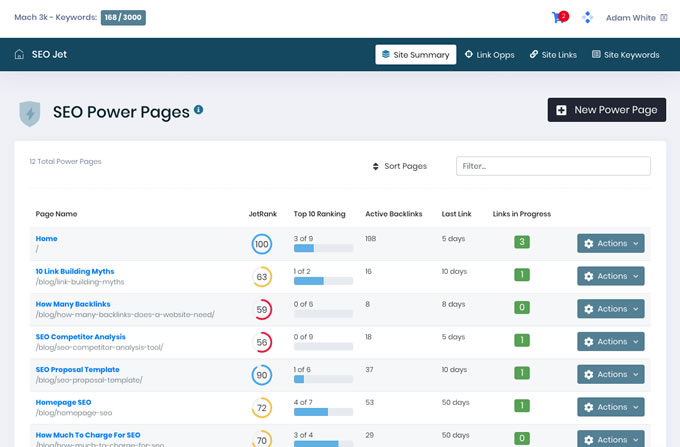
What is even better is that I used some really intense backlink research to figure out what anchor text Google actually wanted and expected to see in a natural backlink profile. The software shows me on each page where my backlink profile currently is and where it needs to go to match other #1 ranked web pages.
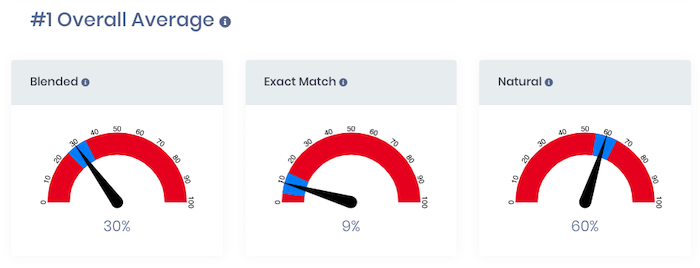
So not only does the software tell you what you have done with your backlinks, it tells you what to do next to maintain your top rankings or to keep rising up the search results. Never has any SEO software existed that makes managing your backlinks so smooth and so simple that even an SEO novice can successfully do it.
The software builds what I call “link maps” for each of your pages. A link map is literally a link roadmap that tells you exactly which links you need to get next.
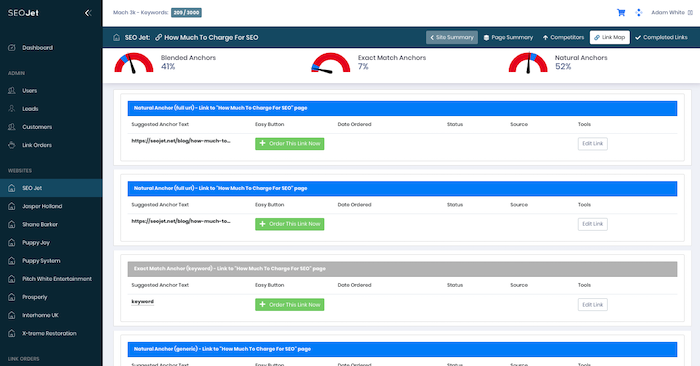
So essentially with SEOJet, the backlink management is done for you.
The software integrates perfectly with the SEO strategy that I teach in our 7 day SEO crash course. With this combination of strategy together with the right technology we have been able to get page one rankings over and over again.
If you haven’t already, check out the 7 day SEO crash course here.
Now get out there and start managing your backlinks like an SEO boss and you’ll see faster results in Google than ever.
Let me know what you think about this post in the comments below.